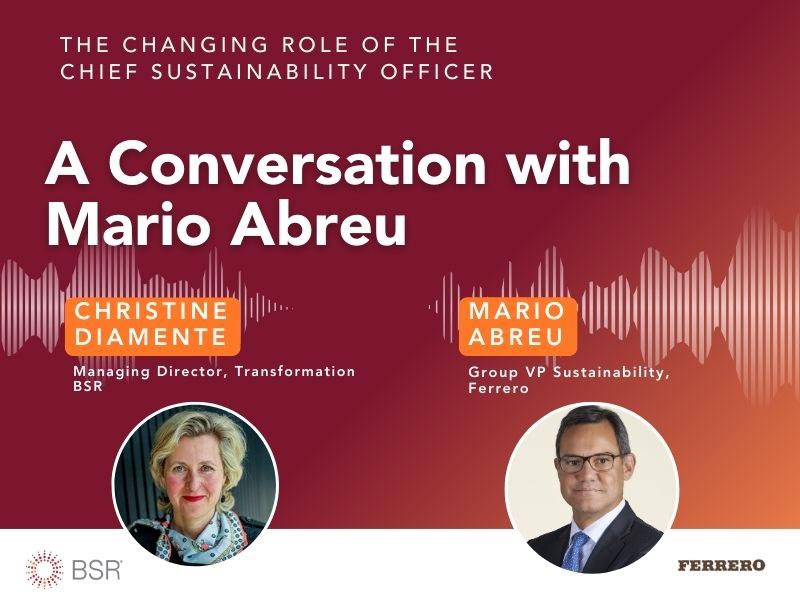BSR developed a tool to help leading companies shift from ad hoc philanthropic donations to strategic investments that make sense for both the business and the community.
The Challenge
To increase positive impacts on society, many companies are focusing on improving access to products and services, creating high-quality employment opportunities, providing skills development and training, and investing in communities located near their offices or operations. Leading companies also see the value of working with other stakeholders to improve community well-being. Related to this trend, some companies recognize the need to shift from ad hoc philanthropic donations to strategic, community-identified investments. These projects focus on building skills and capacity, creating positive long-term impacts, and avoiding programs that make the community dependent on the company for progress.
However, companies face a number of challenges in making this shift. They must stop investing in previous philanthropic projects, and often, there is a greater demand for projects than there are funds available. Typically, companies have few staff members with experience in community investment and development, making it difficult to conduct meaningful dialogue with diverse stakeholders to identify the most sustainable and impactful projects. And it can be particularly difficult to build relationships with vulnerable groups who have not directly benefited from jobs created by the company’s presence. Additionally, it is challenging to consistently implement corporate community investment policies and standards at the local level, given the diversity from one local context to another, as well as limited access to baseline data and outcomes from previous investments.
BSR developed a new tool to address these challenges and help companies make strategic investments that benefit community members and support business goals.
Our Strategy
In 2010, BSR developed a customizable tool for companies to develop community-driven approaches to investments. This tool is one step companies can take to ensure that they meet strategic business goals as well as community priorities.
To begin, companies should conduct socioeconomic baseline and impact assessments to understand the current priorities, assets, needs, and positive and negative impacts from the companies’ presence. Companies can also map stakeholders and develop a corporate community investment strategy (BSR has tools for these two steps as well).
Using the impact assessments and stakeholder engagement efforts as inputs, the community investment tool helps companies develop a participatory approach to identify community investment projects that are aligned with the companies’ and communities’ priorities. A complementary tool helps identify and assess potential project partners. These tools enable analysis, including communities’ input, which provides key information for local community development plans. (For one example of how this tool works, please read a case study on our work with Freeport-McMoRan to develop a multi-year community/social investment plan and stakeholder-engagement process.)
Our Impact
We have customized this tool for a number of companies, and our work has reached more than more than 20,000 individuals within at least 50 communities.
For communities, these projects have helped improve access to necessary services like health, education, and water; they have given community members a chance to receive technical and entrepreneurial skills training, which has enhanced their ability to earn a higher wage; and they have supported environmental conservation, as well as community-based organizations and indigenous cultures.
These projects have also helped companies by giving them new, community-driven development strategies and tools, and by helping them build relationships with external stakeholders; improve their understanding of communities’ assets, needs, and priorities; and identify strategic, sustainable projects.
Lessons Learned
Developing this tool has helped us improve our understanding of how companies can make effective community investments. Here are some important rules for companies to keep in mind:
- Listen closely to understand employees’ and communities’ assets, needs, priorities, and visions for the future, and recognize your role as only one actor in work involving many.
- Develop comprehensive strategies to ensure that resources are used effectively to achieve desired impacts.
- Before making investments in communities, focus on addressing the impacts created by your company operations. Ongoing dialogue with communities about your company’s impacts is essential, regardless of whether or not you are partnering on community investment projects.
- Work with corporate managers to align with your company's global community-investment approach, and work directly with local and regional managers responsible for selecting projects to ensure your company’s approach reflects their daily reality and challenges. This will help ensure that the tools are actually used.
- Understand the cumulative impact of your industry’s presence, particularly if the industry is highly concentrated in specific geographic areas, such as extractives operations near mine deposits, technology companies in communities surrounding the Silicon Valley, agriculture companies in fertile valleys, or factories in trade zones. Collaborate with other industry actors to maximize the effectiveness of your investments and avoid duplicating efforts.

Let’s talk about how BSR can help you to transform your business and achieve your sustainability goals.








